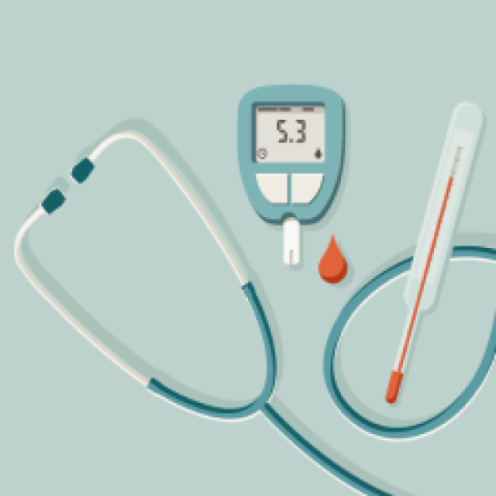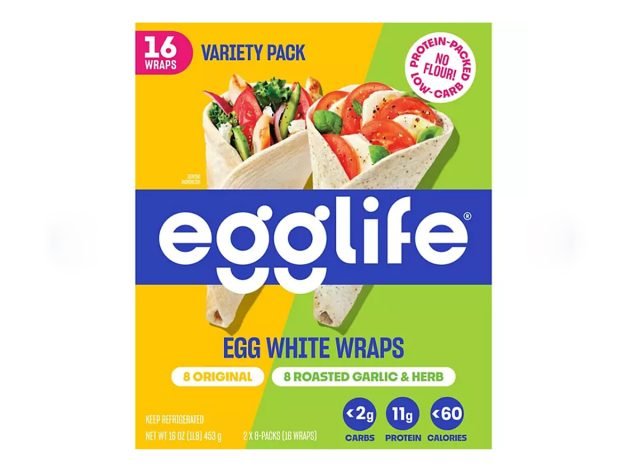Eating for a healthy heart doesn’t have to be complicated. By using the MyPlate approach, you can create balanced meals that support your heart and overall health without spending hours in the kitchen.
“Every time we eat, we have a choice to give our heart the nutrition it needs — vitamins, minerals and other nutrients — to work its best each day,” says Sharla Wiest, a PeaceHealth registered dietitian in Vancouver, Washington.
The MyPlate approach is a simple way to take advantage of that opportunity, she adds.
What Is MyPlate?
MyPlate is a straightforward way to think about your meals, with an eye toward balancing your nutritional needs. It was developed by the USDA in 2011. It divides your plate into five food groups:
- Fruits: Fill one-quarter of your plate
- Vegetables: Fill one-quarter of your plate
- Grains: Fill one-quarter of your plate (aim for at least half as whole grains)
- Protein: Fill one-quarter of your plate
- Dairy: Add a serving on the side

This visual guide helps you eat the right amount of each food group without having to count calories or measure servings.
The heart-health connection
When you follow the MyPlate approach, you naturally include foods that protect your heart by:
- Balancing nutrients: Your body needs a mix of proteins, carbohydrates, and healthy fats
- Increasing fiber: Foods like vegetables, fruits, and whole grains help lower cholesterol
- Reducing sodium: Fresh, whole foods typically contain less salt than processed options
- Limiting added sugar: Focusing on whole foods helps avoid excess sugar that can lead to inflammation
Heart-healthy foods for your plate
Let’s look at how to fill each section of your plate with heart-supportive choices:
Vegetables & fruits (half your plate): Vegetables and fruits provide fiber, vitamins and minerals with minimal calories. Did you know that 6 cups of cucumber slices contain only 100 calories? So do 4 cups of cherry tomatoes. These nutrient-dense foods help you feel full while supporting heart health.
Try these options:
- Leafy greens (spinach, kale, lettuce)
- Colorful vegetables (bell peppers, carrots, tomatoes)
- Berries (strawberries, blueberries, raspberries)
- Citrus fruits (oranges, grapefruit)
- Apples, pears and other fiber-rich fruits
Whole grains (quarter of your plate): Whole grains provide fiber and nutrients that refined grains lack. They help lower cholesterol and keep you feeling full longer.
Heart-healthy choices:
- Brown rice
- Quinoa
- Oatmeal
- Whole wheat pasta
- Barley
- Whole grain bread
Lean protein (quarter of your plate): Protein is essential, but the source matters for heart health. Choose options lower in saturated fat.
Heart-friendly proteins:
- Fish, especially salmon, tuna, and mackerel
- Skinless poultry
- Beans and lentils
- Tofu and tempeh
- Nuts and seeds
- Eggs (in moderation)
Dairy (side serving): If you consume dairy, choose low-fat or fat-free options with minimal added sugar.
Good choices:
- Low-fat milk
- Low-fat yogurt without added sugar
- Low-fat cheese in moderation
Stocking your heart-healthy pantry
When you keep a variety of healthy foods in your pantry, it sets you up for success, Wiest says. “Keep it simple, as simple can still be healthy.”
She also recommends limiting waste by choosing frozen produce or buying from the bulk section when choosing grains, beans or legumes.
Pantry staples to stock up on include:
- Proteins:
- Canned fish (low-salt)
- Canned beans (low-salt or rinsed)
- Nuts and nut butters without added sugar or salt
- Grains:
- Brown rice
- Quinoa
- Whole grain pasta
- Oats
- Fats:
- Olive oil
- Avocado oil
Veggies and fruits:
- Canned tomatoes (low-salt)
- Frozen vegetables (no sauce)
- Frozen fruits (no added sugar)
- Dried fruits (no added sugar)
MyPlate meals in minutes
With MyPlate as your guide and a well-stocked pantry, you can prepare heart-healthy meals in minutes. “Try one new food each week as you work to expand variety in your diet and pantry,” Wiest suggests.
Here are some ideas for a simple daily menu:
- Breakfast:
- Oatmeal topped with berries, nuts, and a splash of milk
- Whole grain toast with avocado and a boiled egg
- Lunch:
- Tuna salad (made with olive oil instead of mayo) on whole grain bread with lettuce and tomato
- Bean and vegetable soup with a side of fruit
- Dinner:
- Salmon with roasted vegetables and quinoa
- Stir-fry with chicken, plenty of vegetables, and brown rice
Small changes, big impact
“We all have the power to protect our hearts and keep them strong through the food choices we make,” Wiest says. Even small changes to your eating habits can have a big impact on your heart health.
You don’t need to transform your diet overnight. Start by making one or two MyPlate-inspired meals a week, then gradually increase as you become more comfortable.
The more often you make these beneficial food choices, the easier it becomes for your heart to do its important work.
Want visual inspiration? Check out this YouTube playlist for quick, easy and heart-healthy recipe videos.








